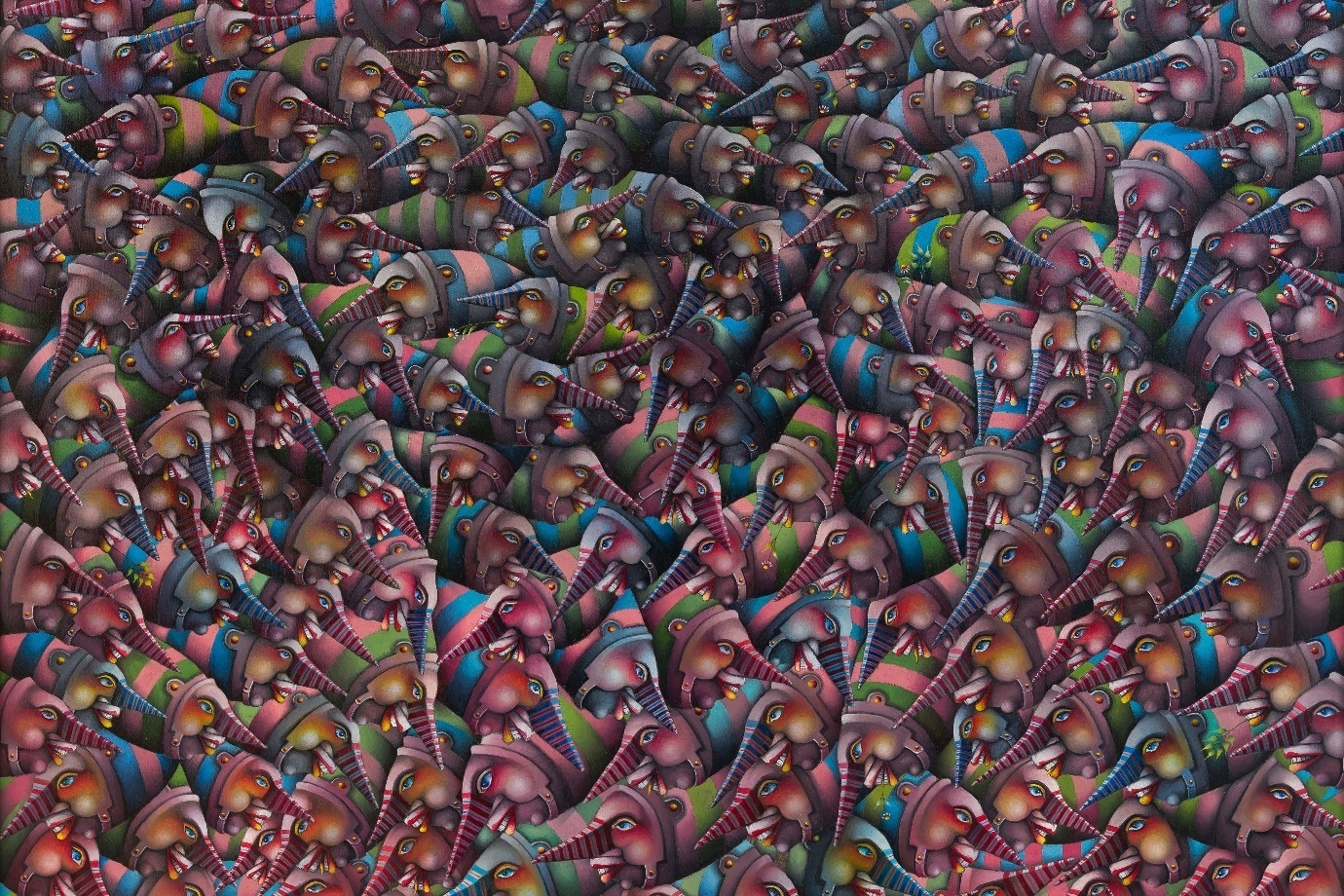“Attempt at adaptation” is the name of one of the exhibition’s paintings and becomes a reminder of the almost violent demands for assimilation in Ythjall’s universe. Or: Despite the fact that there are absurd, disturbing freedoms in this surreal universe, the apparently limitless fantasy space of the playful man, the acclimatization demands of the rectification and leveling are aggressively formulated. We are bound fast, and we are bound together, irrevocably; in Ythjall’s world, however, this choice is made for us. A world of narrow freedom, narrow spaces. Public and private are no meaningful distinction in these pictures – which he shows us the painter’s third, all-seeing eye: Ythjall paints a perverted paradise, a permanent panopticon.
But Ythjall’s mask bearers target both the stable visual language and court culture of the Middle Ages and the contemporary homogenization phase as parts of the same accounting. We still find ourselves – as we should in Ythjall’s pictures – with a figure between the jester, the Harlequin and the clown – the archetypal universe of the Commedia dell’Arte. He explores the altarpiece’s alternation between diptych and triptych; the varnish-smooth, regular precision of the pre- and early modern image; it is like an unchanging, prototypical weight that makes Ythjall’s tableaus almost iconic in their repetitive rhythm, their aesthetic suggestion. So are the visual conversations; figures like Brueghel and Bosch, Altdorfer and Cranach, are painters Ythjall thinks through, paints through, talks with; the used, painted brush is Ythjall’s tool.
But these are paintings that, through Ythjall’s many years at Galleri Haaken, have never been painted, conceived, finished. Rather, they are always in a process of triggering, releasing and changing as possibilities in the viewer’s experience. The humor and the horror condition each other mutually. Magritte’s impossibility, De Chirico’s intensely charged distance and solitude.
The poles in Ythjall’s permanent world of ambiguity; if “gallows humor” could be said to embody such a tension, to give us boundaries between comedy and tragedy, Ythjall asks, or perhaps rather suggests, the question, whether it is the gallows or the humor that is most important.
Be it in the face of salvation or the great silence afterwards; Ythjall’s figures continue to smile.
– Simen K. Nielsen
To the list of all mentioned exhibitions




